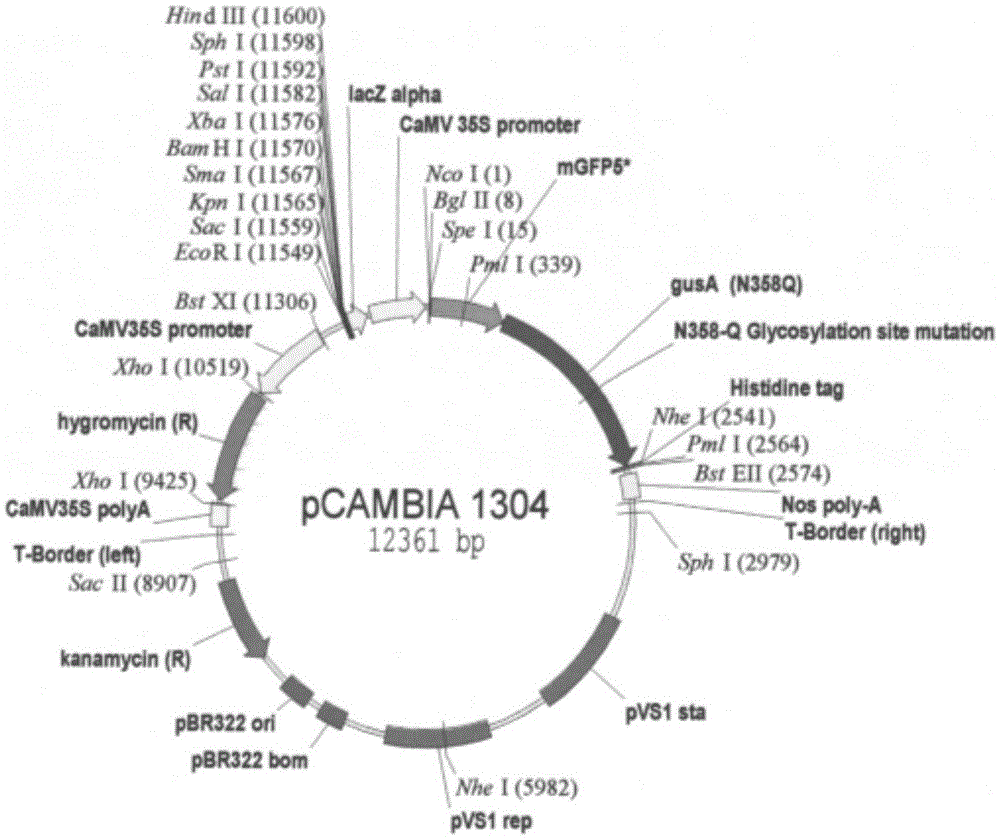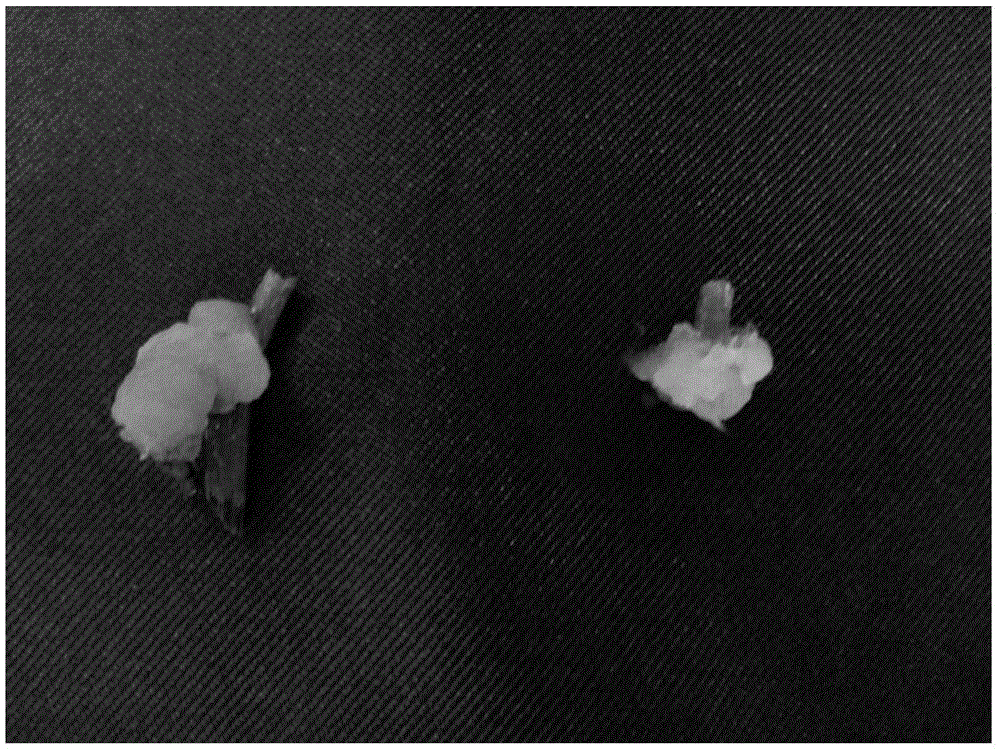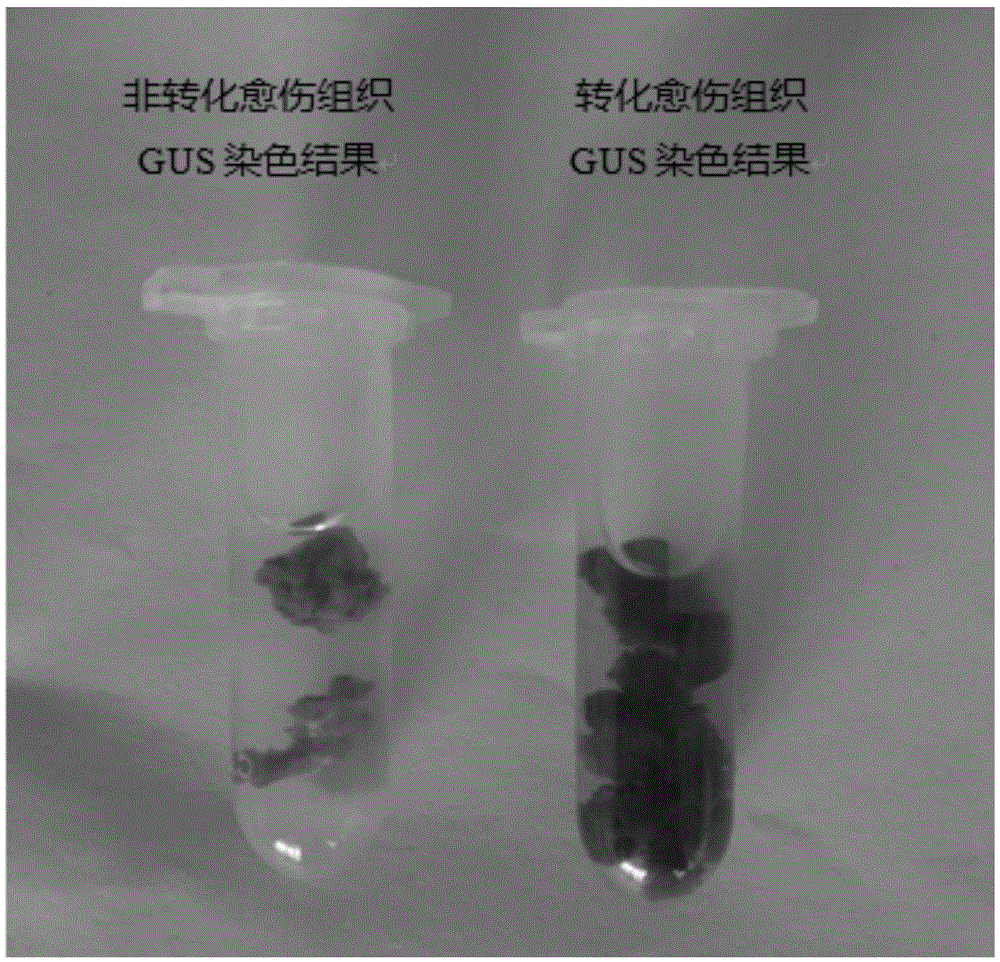Dangshan pear genetic transformation method
A genetic transformation method and technology for genetic transformation, applied in the field of genetic engineering of horticultural crops, can solve the problems of low survival rate of transplanting, insufficient robustness of roots, rooting rate of callus, etc., and ensure the efficiency of genetic transformation, browning rate and pollution. The effect of low rate and small amount of bacteria carried
- Summary
- Abstract
- Description
- Claims
- Application Information
AI Technical Summary
Problems solved by technology
Method used
Image
Examples
Embodiment 1
[0041] Establishment of genetically transformed receptors
[0042] From March to April, cut Dangshan crispy pears from the field as explants, soak them in washing powder water for 20 minutes, then rinse them with running water for 1 hour, and place the explants in 75% alcohol on a super-clean bench Soak for 30s, rinse with sterile water once or twice, then soak in 0.1% mercuric acid solution for 5-6 minutes, in which 1 to 2 drops of Tween-80 should be added to the mercuric solution, and rinse with sterile water for 4-5 times , blot the excess water with sterile filter paper, inoculate horizontally on the surface of the callus induction medium, place in a 16-hour light, 8-hour dark photoperiod culture room for cultivation, light intensity 1500-2000lx, temperature 25°C; 20 days Callus can be induced by left and right, such as figure 2As shown, the callus can be directly used as a genetic transformation recipient; the formula of the callus induction medium is: MS+6-BA1.0~2.0mg / ...
Embodiment 2
[0044] The cultivation of Agrobacterium and the configuration of infection solution
[0045] The selected Agrobacterium EHA105 carries the recombinant plasmid PCAMBIA-1304, and contains the marker gene NptII and the reporter gene GUS. The vector map of PCAMBIA-1304 is as follows: figure 1 As shown, the inserted target gene is the ferulic acid 5-hydroxylase gene (F5H) cloned in our laboratory (Genbank accession number: KC852907), the insertion sites are NcoI and BglII, and the ferulic acid 5-hydroxylase The gene (F5H) is used to regulate the enzyme that converts G-lignin to S-lignin in the process of lignin synthesis. The higher the content of S-lignin, the lower the polymerization degree of stone cells formed, and the smaller the stone cell clusters. The quality of pear fruit will be better; the preserved Agrobacterium will be activated by streaking on the double-antibody LB solid medium. When the OD value reaches 0.8-1.0, transfer the bacterial solution to 100 ml double-anti...
Embodiment 3
[0047] Infection and co-cultivation
[0048] Soak the callus in the infection solution, infect at 28°C and 50r / min for 10 minutes, take it out, blot the excess bacteria with sterile filter paper, and inoculate it on the co-cultivation medium; The basic formula is: 1 / 2MS+6-BA2.5~3.0mg / L+IBA0.2~0.4mg / L+10~20g / L sorbitol+AgNO 3 0.5mg / L+AS0.15mmol / L, the co-cultivation time is 48-60 hours, the temperature is 25 ℃, dark culture.
PUM
 Login to View More
Login to View More Abstract
Description
Claims
Application Information
 Login to View More
Login to View More - R&D
- Intellectual Property
- Life Sciences
- Materials
- Tech Scout
- Unparalleled Data Quality
- Higher Quality Content
- 60% Fewer Hallucinations
Browse by: Latest US Patents, China's latest patents, Technical Efficacy Thesaurus, Application Domain, Technology Topic, Popular Technical Reports.
© 2025 PatSnap. All rights reserved.Legal|Privacy policy|Modern Slavery Act Transparency Statement|Sitemap|About US| Contact US: help@patsnap.com



